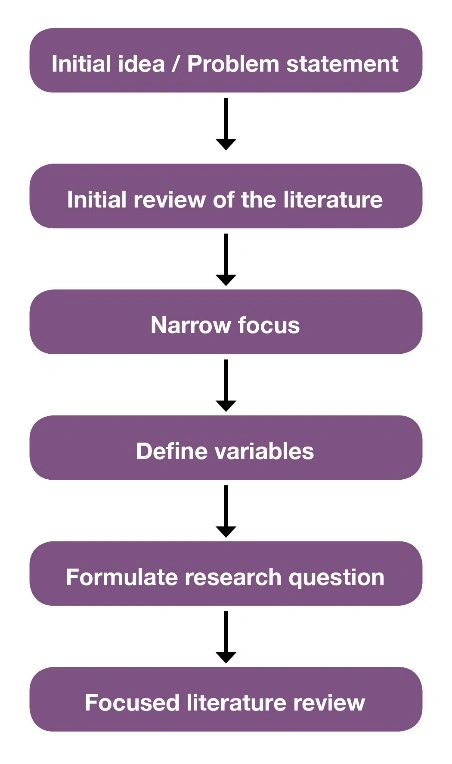How to Write an Introduction and Literature Review Chapters of Sociology Masters’ Thesis
Introduction
Scheduling your time is one of the most challenging aspects of undertaking original research. Too many individuals put off writing until the last minute, leaving less time for corrections, and as a result, they end up with a dissertation that falls well short of its and their ability. Others keep their advisors in the closet until the very last minute well before thesis is due, only to be caught off guard when the adviser requests alterations and time runs short.
Before you start collecting data, concentrate on the introduction and literature review draft, and write the methods chapter while the scholars are creating the tools. Working on Manuscripts is easier than gazing at a blank computer, and the final draft will most likely look substantially different as you proceed to rewrite and concentrate the argument (Reitman et al. 2020). The introduction should be between 5 to 10 pages of text in most cases. Tutors India will help in assist how to write an introduction and literature review chapters of sociology masters’ thesis.
The goal of the introduction to your thesis is to:
- Make a list of essential research questions.
- Give a brief overview of the important theoretical disputes or bodies of research with which the scholars are involved.
- Give a quick overview of the approaches they are using to respond to the query.
- Make a case for why the research question is essential or how answering it will help reader.
- Briefly summarise your main results. The scholar has to describe the readers what is being discovered, and then use the remainder of the dissertation to discuss and the implications of the research.
- Give the reader a roadmap or outline of the dissertation. Use easy-to-understand language.
There are many different methods to structure the dissertation, and not all of them will have same type or number of chapters. The next section, on the other hand, specifies the fundamentals that one should include in the thesis in some fashion, whether as distinct chapters for each element or in another format permitted by the adviser.
Here are some tips before you start:
- Don’t consider the writing process being something you do at the finish of your thesis project. The scholar should be writing and rewriting the thesis on a periodic basis to identify that all of its components are working together to communicate the same message. If the student writes the introduction and literature review in the autumn and don’t look at them until the spring, they may not be relevant to the data they have chosen to gather (Xiao and Watson 2019).
- The scholar doesn’t have to write the entire thesis, or even individual chapters; they might start in the middle, for example, with technique details or historical context. Because they are reporting about what they did or something they already know, this is oftentimes a good place to start. Many students find it beneficial to begin with the literature review, which provides crucial background information, and then write the Techniques Section as Data Collecting occurs. The introduction chapter is frequently the last one to be written. We have an experienced Tutors India team to help the scholars regarding writing the introduction and literature review.
Writing Literature Review
The literature review should be the first priority. A literature review is a critical analysis of previous research on the issue. Writing a paragraph summarising the main idea of each article the students read isn’t enough for an analytical summary. They should connect the readings in an analysis summary to make a narrative about what’s been performed and what remains to be improved. Also should organise the readings into several primary theoretical or experimental categories and highlight important disagreements within and within these conceptual bodies of work (Cheng 2019).
A literature review’s purpose is to find two or three theoretical constructs or experimental bodies of research in which you may locate the research issue. One must make a theoretical and empirical link between the research issue and a bigger body of knowledge. The literature review should be between 10 and 20 pages long in most cases. The scholar may structure your literature review in a number of different ways. Separating it into empirically and theoretically components is one possibility. The two or three primary substantive subjects relevant to the inquiry can then be identified within those parts. Another option is to combine theoretical and empirical research and organise the literature review by fundamental issue, then explain empirical and theoretical results related to that topic.

Fig1: Process in writing Literature review
Source: Frederiksen and Phelps (2017)
Conclusion
Thus, once the analyses and findings chapters are completed, the introduction would be totally revised. The argument will most likely alter emphasis over time, and the introduction must reflect this. One tip is to make a note of what the literature review and introduction say and read it every time the students sit down to work on the findings section. This will guarantee that the dissertation is a connected work rather than a collection of disparate segments. Our Tutors India professionals helps the scholars with many options in writing an introduction and literature review chapters of sociology masters dissertation.
References
- Cheng A (2019) Examining the “applied aspirations” in the ESP genre analysis of published journal articles. J English Acad Purp 38:36–47.
- Frederiksen L, Phelps SF (2017) Literature reviews for education and nursing graduate students. Rebus Community
- Reitman JG, Anderson-Coto MJ, Wu M, et al (2020) Esports Research: A Literature Review. Games Cult 15:32–50.
- Xiao Y, Watson M (2019) Guidance on Conducting a Systematic Literature Review. J Plan Educ Res 39:93–112.

 Previous Post
Previous Post